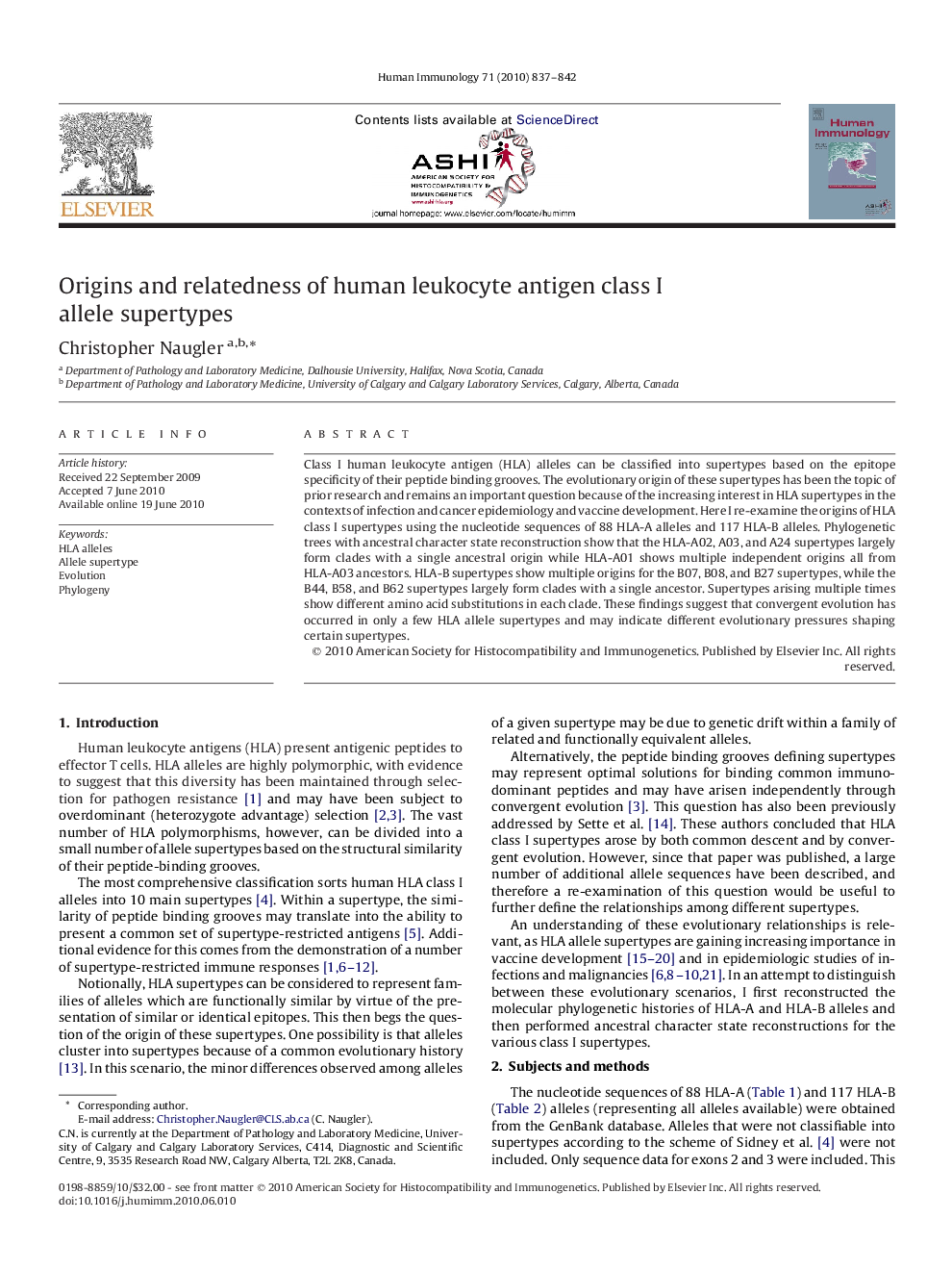| Article ID | Journal | Published Year | Pages | File Type |
|---|---|---|---|---|
| 3351798 | Human Immunology | 2010 | 6 Pages |
Class I human leukocyte antigen (HLA) alleles can be classified into supertypes based on the epitope specificity of their peptide binding grooves. The evolutionary origin of these supertypes has been the topic of prior research and remains an important question because of the increasing interest in HLA supertypes in the contexts of infection and cancer epidemiology and vaccine development. Here I re-examine the origins of HLA class I supertypes using the nucleotide sequences of 88 HLA-A alleles and 117 HLA-B alleles. Phylogenetic trees with ancestral character state reconstruction show that the HLA-A02, A03, and A24 supertypes largely form clades with a single ancestral origin while HLA-A01 shows multiple independent origins all from HLA-A03 ancestors. HLA-B supertypes show multiple origins for the B07, B08, and B27 supertypes, while the B44, B58, and B62 supertypes largely form clades with a single ancestor. Supertypes arising multiple times show different amino acid substitutions in each clade. These findings suggest that convergent evolution has occurred in only a few HLA allele supertypes and may indicate different evolutionary pressures shaping certain supertypes.
